Glasopor makes it easier to build on poor ground conditions
Glasopor is the lightest granular building material on the market. It is made of 20 % glass, and 80 % air.
It’s unique qualities lead to reduced transport and construction time, which means reduced cost, and reduced impact on the environment.
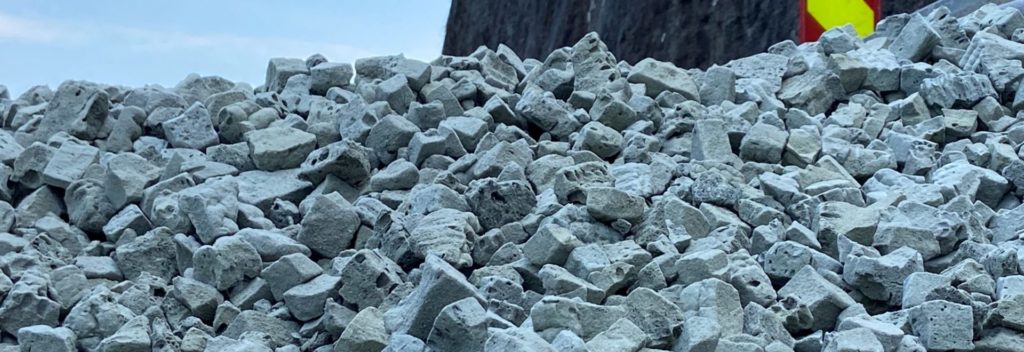
Fordeler med Glasopor
Light weight
Glasopor is up to 10 times lighter than traditional rock masses, and reduces pressure to the ground by up to 90 %. With a loose bulk weight of 180 kg / m³, it is the lightest granular building material on the market.
Stable
Glasopor's coarse surface and a cubic form gives it an angle of repose on incredible 45°! Thus, it's predictable and easy to work with. The filling material is possible to walk on without any compression.
Sustainable
Glasopor er fremstilt av 100 % resirkulert glassemballasje som er samlet inn fra husholdninger i hele Norge! I tillegg blir deler av Glasoporen produsert ved hjelp av sertifisert, kortreist strøm.
Insulating
Glasopor consists of 80% air and has excellent insulating capabilities. The material is very suitable as frost protection for road construction, and requires less digging depth to achieve good frost protection.
Drainage
Glasopor is a coarse, granular material with good draining capabilities. Water will be led down into the drainage network and will not remain standing against structures or remain in the landfill.
Less digging
Because of its low weight and stabilizing qualities, Glasopor allows less digging to achieve the benefits of compensated foundation. This means significant savings on construction time and costs related to transport and disposal.
About Glasopor and Sirkel
Glasopor is 100 % made from recycled glass containers collected from households throughout Norway.
Glasopor was owned by Sirkel until 2021, and is now owned by the Foamit Group. Sirkel receives glass and metal containers to it’s recycling facility in Fredrikstad. Most of the sorted glass goes to production of new glass. The most crushed and fine-grained glass is used as raw material to produce Glasopor foam glass.
Glasopor’s two factories are situated in Skjåk and Fredrikstad. Our administration and sales & marketing division is situated in Helsfyr in Oslo.
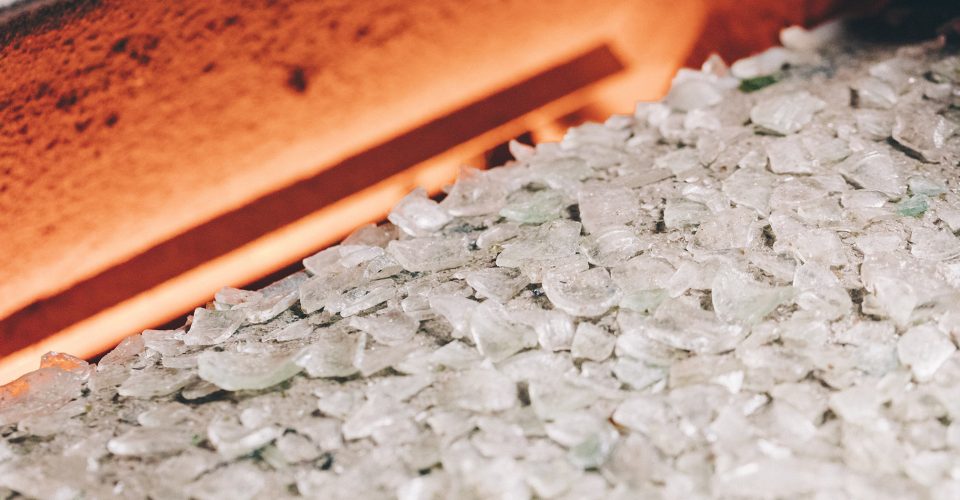
Usage of Glasopor foam glass
Glasopor is used in infrastructure, in the construction of roads, tunnels, railways – and in road maintenance.
Glasopor is also used in the construction of buildings, as foundation and foundation for piling, backfilling, insulation – and green roofs.
Because it’s so stable and because of the light weight, Glasopor is also perfect for landscape architecs in making green areas outdoors.

Glasopor and Foamit Group
In 2021, the Finnish foam glass manufacturer Foamit Group acquired Glasopor AS. Foamit Group Oy is a Finnish glass recycling and foam glass production company with two subsidiaries Uusioaines Oy and Hasopor Ab, as well as the associated company Reiling Green Tech ApS.
The largest owners of Foamit Group are Partnera (62%) and Tesi (Finnish Industry Investment Ltd) (31%). The acquisition strengthens Foamit Group’s position as the most important foam glass manufacturer in the Nordic region, and is becoming one of the largest players in the industry worldwide.
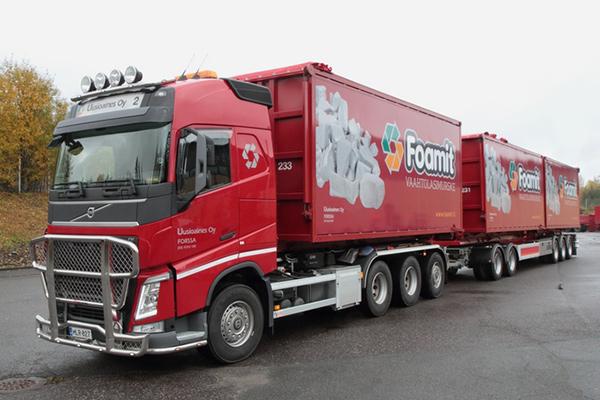
Do you want to know more about Glasopor?
Please contact us, we are pleased to answer all your questions.
Project: E18 Knapstad-Retvet
Glasopor was crucial for this large project of a new 4-lane highway in Knapstad in Norway.
Parts of the highway section had sensitive masses, and Glasopor was used as a light filling to avoid loading the ground more than what the masses did before the road was constructed.
The builder Statens Vegvesen emphasizes that Glasopor is cost-saving and effective on the construction site. It is easy to lay out the light filling.
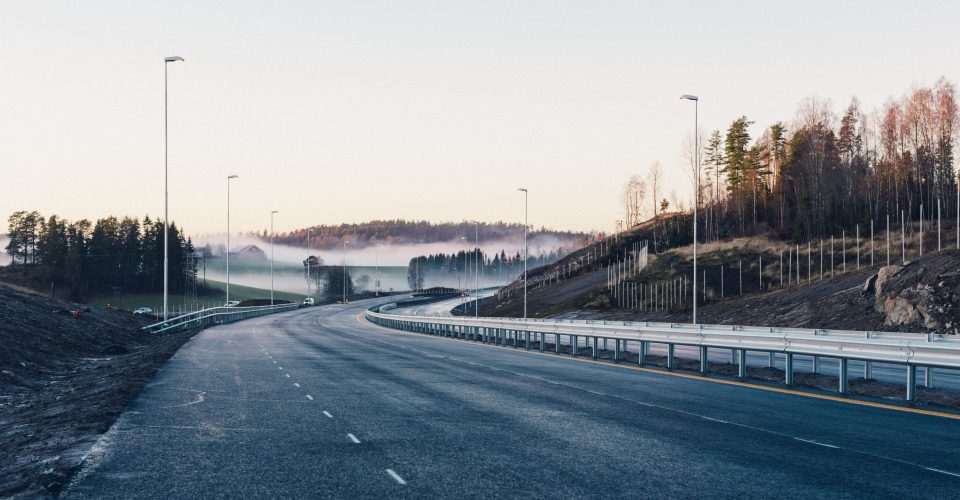
Project: Bergen Light Rail
Work on the new light rail from the Bergen city center to Fyllingsdalen is well underway – with a green focus.
Requirements for climate-friendly materials have made it natural to choose Glasopor, and this has resulted in several savings for the project.
– Glasopor being a recycled product, makes it a perfect fit with our green profile, says Nils Helge Sivertsen in Bybanen Utvikling.
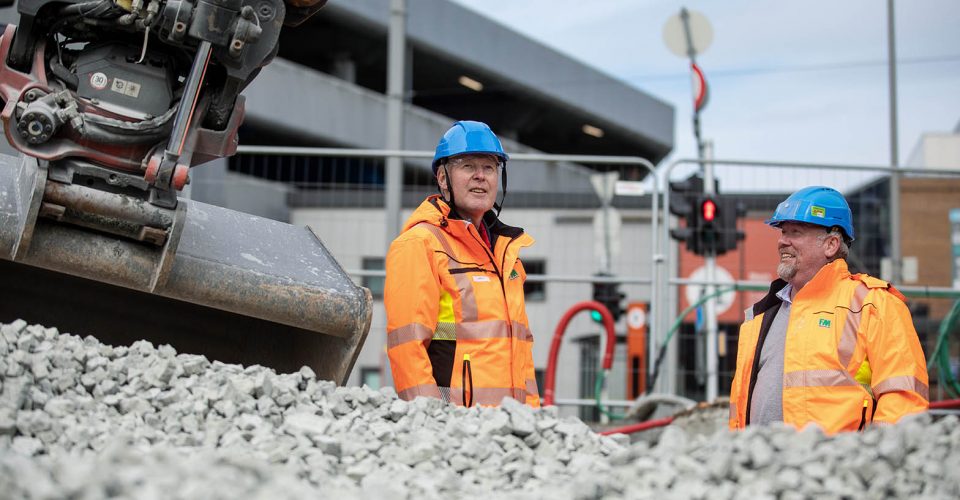
« It is very good to work with compared to other light fillings. Due to the shape, the Glasopor settles better and does not roll away »
Patrick Cerin Bekkevold – OBOS Block Watne
Project: Green roof at The Hub hotel
At the top of the magnificent Clarion Hotel The Hub, in the middle of Oslo city center, is a hidden green pocket of 200 square meters.
– We notice great interest in what is happening on our roof, says Camilla Dahl, Digital Marketing Coordinator at The Hub.
Glasopor became a crucial piece under the sedum roof. A very good solution to fill up the roof to give it a nice landscape feel, says Blomstertak AS, who has made the green lung on the hotel roof.
The green roof of The Hub will handle excess rainwater – and supply the hotel’s restaurant with its own unrefined ingredients.
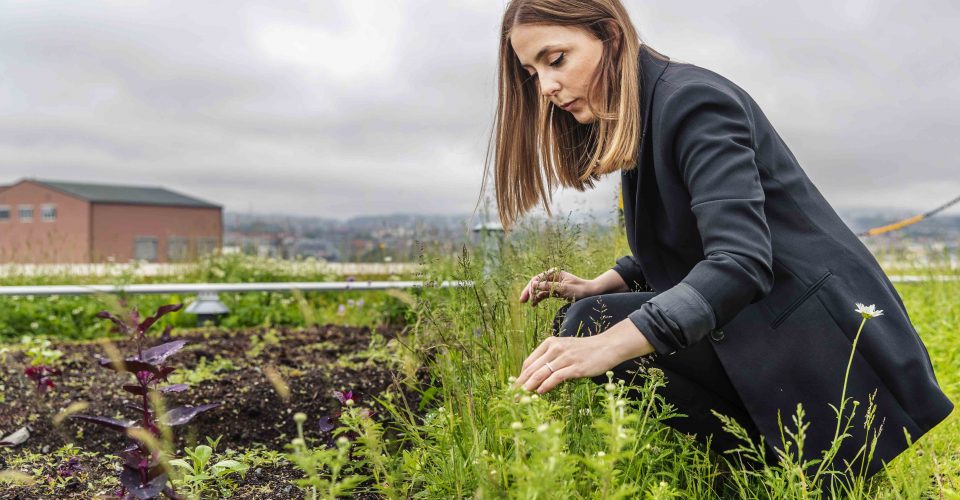
Project: School building in Namdalseid
Namdalseid’s new school will be a modern environmental building in every way. Glasopor as a foundation reduced the construction time by three weeks.
– I applaud all innovative progress, says Kristian Lamo, construction manager in Namdalseid municipality.
Clay under the masses made the project challenging. A new piling method with Glasopor provided a simpler solution with less work.
180 primary school students and 25 employees will benefit from the environmentally friendly technology.
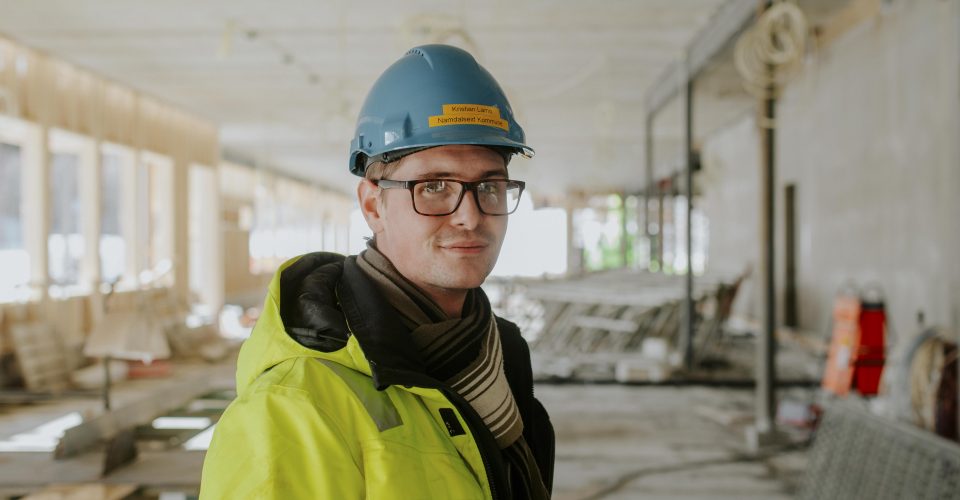
Technical Specifications & Environmental Product Declaration (EPD)
| Glasopor 10-60 | Method | Measure |
|---|---|---|
| Grain size | NS-EN 933-1 | 10-60mm |
| Dry density | NS-EN 1097-3 | 180 kg/m³ |
| Particle density | NS-EN 1097-6 | 380 kg/m³ |
| Resistance to crushing (by 20% compression) | 770 kPa | |
| Dimensioning gravity density in filling | NS-EN 1097-3 | 3.0 kN/m³ |
| Dimensioning gravity density against flotation | NS-EN 1097-3 | 2.2 kN/m³ * |
| Suction height | NS-EN 1097-10 | 170mm |
| Volume change by compression | NS-EN 1097-10 | 15-25% |
| Friction angle | 45° | |
| Thermal conductivity (dry) | NS-EN 12667 | 0.097 W/mK |
| Thermal conductivity (wet) | NS-EN 12667 | 0.107 W/mK |
| Freeze-thaw resistance | NS-EN 13055-2 | 0.2% |
| Maximum layer thickness before compression | Retaining walls/abutments | 0.6m |
| Light filling | 1.0m | |
| Ditches | 0.3m | |
| Compression | Crawler machinery with belt pressure | < 50 kN/m² |
| Plate vibratory compactor | 50-200kg | |
| Static load | Maximum pressure | 80-120 kN/m² |
| *Remember that Glasopor has a density that is lower than for water which is around 1000 kg/m³. Therefore, use caution when working where water can occur. | ||

